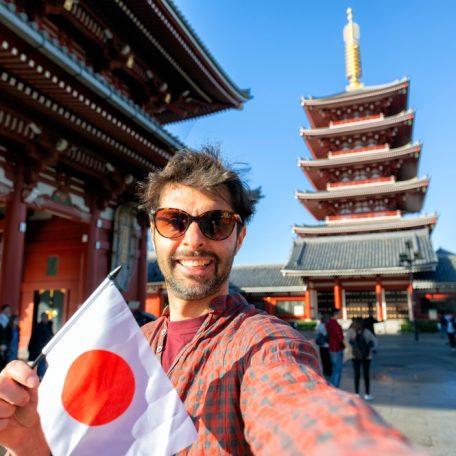Crazy Shaped Watermelons, the secrets of the Japanese luxurious fruit
Aug 31, 2020
BY Denise Aoki

Japan is a country that people usually associate with innovation, not only in technology with the hi-tech home appliances, games and fun gadgets but also in agriculture and food production, with the development of crossbreeding plants and growing techniques that results in high-quality products and new types of vegetables and fruits like white strawberries, broccolini (a cross between broccoli and kale) or purple carrots.
Between these innovations you will find in every corner of this country, shaped watermelons are one famous attraction especially during summertime, when the juicy composition of the fruit makes it one of the best fruits to prevent dehydration and to refresh. Shaped watermelons started to be produced in Kanagawa prefecture in 1980’s in order to fit better in compact Japanese refrigerators at that time. The first one created was cubic, a good shape not only to be easily stored but also to prevent it from rolling, and the increasing demand of them stimulated the production of many other shapes like heart-shaped, square, pyramid or even a human face watermelon!

The shaped watermelons are not genetically modified to grow in the particular shape. The format of it can be changed with acrylic shaped molds, where the watermelons are placed when they are still small in the vine. When the melons grow, they naturally assume the shape of the mold. The method seems simple but many of these fruits took years of research to get their shape properly. They also require extra care to be produced. The watermelons are monitored in a daily basis in order to provide the necessary water and nutrients to the fruit, to pest-control and to remove the molds at the correct time. One mistake during the process can destroy months of the farmer’s work.

In recent years, not only in Japan but also abroad, the demand for these watermelons is high. Despite the fact it’s said they are not as sweet as the common one because they are grown in a mold, preventing them to achieve their full maturity, the special shape of these fruits makes them expensive and a desired ornamental item. Each typical square watermelon is sold for approximately $80 – $100 dollars in Japan, but they can cost much more if they are a special designed shape or a limited edition. For example, the pyramid shaped and the human face one can cost around $500. The mini heart-shaped watermelon costs around $200, and the large version will be around $350. They are usually wrapped in a beautiful luxury package, what makes them a real tourist attraction and an example of how creative and innovative the Japanese people can be.

At this point, you must be thinking: “Why are these watermelons so expensive? Who will pay for them?”
The answer involves historical and cultural reasons. In general, the fruits have valued qualities for Japanese people like seasonality, so it shows the colors, smells and taste of that particular season, it is perishable, so it won’t clutter the house and since ancient times, it is also a common offering to Shinto and Buddhist religions. In the complex gift-giving Japanese culture, all these qualities make the fruit a luxury item. The act of giving premium versions of them as gifts expressing gratitude is a common custom, that’s what makes the shaped watermelon one of the most famous gift for special occasions.

Among the Japanese innovative products, the shaped watermelons are one example of the summer attractions that you may find during your next trip to Japan. You may find these premium gifts in specialist fruit shops and in department stores in the summer. Make sure to visit them only to admire the fruits or even to get one of these novel funny-shaped watermelons to give as a gift or to enjoy with your family, friends and people that you love .
PIN THIS FOR LATER
Learn amazing facts about the Top 5 Japanese foods on our brand-new online tour!
Book your pocket wifi now to stay connected through your entire Japan Journey!

Be sure to get the JR Pass to make navigating Japan during your trip that much easier!

YOU MIGHT ALSO LIKE




